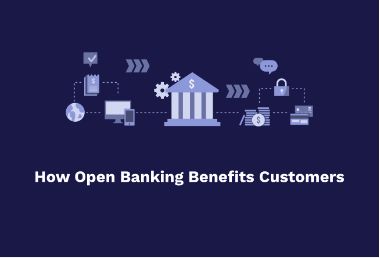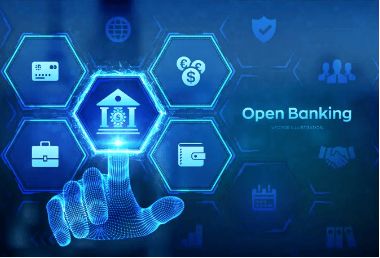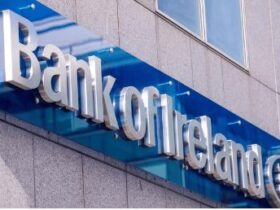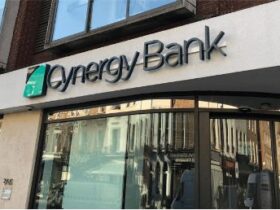Open banking: what is it?
The term “open banking” describes how banks and other financial organisations make data available for usage, access, and sharing by licenced suppliers.
For a data-sharing initiative like open banking, security is critical, and banks are successfully setting up the framework so that, with consent from clients, their data may be shared more securely with other parties. It’s crucial that data sharing only occurs with client consent. Banks were not intended to be able to more readily sell the data of their consumers through open banking.
The goal of open banking is just the opposite: by providing clients with access to data that has traditionally been kept internal, new businesses and products can enter the market and make creative and useful use of this data. Open banking was designed to improve financial services for customers.
What does all this mean, then?
At the top of the food chain, open banking will enable financial service providers to dramatically innovate the products they offer to businesses.
For companies of all sizes, financial service providers’ advances will result in more useful and efficient financial instruments, particularly for payments. More automation will result from this, giving you more time to spare, relieving the burden of human labour, and eventually saving you money.
Better options to spend, borrow, and invest will be available to customers with open banking.
What issues does open banking address?
Open banking doesn’t specifically address any significant issues. Simply said, the goal of open banking is to improve business and consumer experiences by fostering innovation and competition in the financial services industry.
The following are a few general issues that open banking can assist with:
- Low level of bank trust
- Friction brought forth by the banking product’s extremely close integration of data and procedures
Among the opportunities open banking aspires to are:
- Assisting people with better financial transactions, saving, lending, borrowing, and investing
- Cut back on overdraft charges
- Boost client support
- Gain more authority over your financial information
What is the process for open banking?

In terms of technology, APIs (application programming interfaces) are essential to open banking. All it takes for one programme to provide services to another programme in an organised manner is an API. Said another way, it’s basically a means of facilitating software communication with other software.
Consider the information we’ve just discussed, such as the account holder’s name, account type, currency, etc. In essence, APIs are the guidelines that specify how a third party can obtain such data from a bank.
It is up to the banks to develop and execute these APIs when everyone participating in the open banking project (such as the government, regulators, and banks) has agreed upon them. As soon as they do, companies can begin utilising them to create fresh, creative items. Ultimately, employing these cutting-edge items would benefit these enterprises’ customers, which could be individuals, small businesses, or even big companies.
Use cases for open banking
Important instances consist of:
- Better business payment options — Businesses could employ payment solutions that enhance cash flow, cut expenses, boost visibility and control, and lessen fraud with the payment initiation side of open banking.
- Better terms for borrowing – You might not be able to obtain beneficial terms for borrowing if your credit history is not very strong. However, with open banking, lenders can access information about your past bank accounts to better assess your creditworthiness.
- Improved financial management – Open banking solutions have access to your account data and can examine all of the money that enters and leaves your accounts, assisting you in identifying opportunities and problem areas (e.g., cheaper fees, better interest).
- Seeing all of your accounts in one location is known as account aggregation. Rather than needing to navigate between numerous apps on your phone or log into numerous accounts on your web browser.
What information is “opened up” by open banking?
Three main areas of “opening up” are account data, product data, and payment initiation in open banking.
Account information
Expected account info is provided. Items like as:
- Name of the account holder
- Type of Account
- Money
- When the account was first opened
- Details about the transaction (amounts, merchants, etc.)
Product information
Product information relates to the goods and services that a bank may provide. For instance, in the past, in order to learn what a bank might provide you as a customer, you had to physically visit the location. You can now contact them via phone or, much better, visit their website.
However, open banking puts this data into a common format so that other people can more easily present you with the solutions that are best for you. (Imagine your accounting software advising you when a bank transfer would be a better option and precisely which account to choose.)
Start of payment
The process of initiating a payment involves transferring funds between two bank accounts. However, open banking can start this procedure using other applications, apps, or websites, saving you from having to log in to online banking and manually go through the payment process step-by-step. Additionally, it can be accelerated with the account holder’s express permission.
The money’s recipient has important advantages as well.
Just consider the volume of payments that a big utility company receives that are never reconcilable since they are for the incorrect amount with the reference “electricity”! Open banking will take care of that.
What advantages does open banking offer?
- Easy accessibility
- Lowering of costs
- Individualization
- Better judgement
These are the market-wide advantages that open banking is offering. not just for customers, but also for companies.
Two things occur when you give permission for safe access to your banking information:
- Software solutions can now leverage a new range of extremely valuable financial data about you or your company, which is advantageous to you.
- It is possible to develop completely original software items, which can motivate fresh competitors to innovate and fight for your business.
You should be able to obtain financial products that are more suited to your individual needs and notice a decrease in expenses as a result of this transparency and competition.

Additionally, it is inevitable that when you let financial products access to more of your data, they will use it to improve their ability to assist you in making wise decisions.
What to anticipate seeing is:
- Overviews that include all of your financial information in one location, including bank accounts, credit cards, investments, loans, pensions, and more.
- Enhanced accessibility – Certain individuals just cannot access certain items, such as favourable loan terms. Others might simply be rejected outright. However, consumers and organisations who have traditionally been excluded will now have newfound access to certain financial products thanks to increased access to banking data.
- Increased automation – As standardised financial data becomes available, goods should further automate presently manual operations and see a rise in “robo-advice.”
- Better online payment experiences, like Instant Bank Pay, will allow companies and their clients to send and receive bank-to-bank payments more quickly and easily, even surpassing or replacing credit card payments.
Benefits of open banking for companies

Reduced entrance obstacles and increased competition
One of the corporate sectors with the most rigid, heavy legacy systems was banking. Customers would open a bank account, and that bank would be the sole repository for all of their data, resulting in an ineffective reliance on customers by financial organisations.
Small firms have no place in this industry because banks and building societies were destined to rule it.
Open banking has made it possible for smaller firms to access the same data as larger banks, which has spurred innovation and led to the development of fresh, more reasonably priced financial services. By removing obstacles to entrance, open banking has democratised the industry.
Banks will need to enhance their services.
Banks will gain from increased competition as well. It’s critical to emphasise that open banking does not intend to displace established banks. If anything, it presents a chance for them to seize the initiative and move closer to a future that is more digital and focused on the needs of the consumer.
The fact that traditional banks have recently provided their clients with online banking options and banking apps so they may take advantage of improved offers and experiences is no accident. Banks are embracing change by using the new technology as they watch the FinTech transition unfold in front of them.
Higher customer involvement and a better likelihood of success
Enhancing the relevance of services that are recommended to customers through open banking naturally raises the likelihood that they will participate. The likelihood that a consumer would interact with a brand increases with the level of personalisation of service provided to meet their demands.
FAQs
In the UK, how secure is open banking?
Open banking is built with extreme security in mind, just like any other solid financial technology. Since banks are the ones who install it, their strict security protocols apply to it.
The customer is always in control of who has access to their data, and they have the right to withdraw access at any time.
Furthermore, in the event that fraudulent payments are made, your bank or building society will return your money in a suitable manner.
Consumers are safeguarded by data protection laws and the Financial Ombudsman Service, and open banking products and services are governed by the FCA (or its European counterpart, if it is situated in the EU).
Is PSD2 open banking?
PSD2 is not identical to open banking, yet they are closely connected.
PSD2 is an EU law designed to boost competition and innovation in the banking sector. It eliminates banks’ monopoly on the use of client data, letting other firms to utilise that data with the consumer’s consent.
In the United Kingdom, open banking allows providers to have safe access to your financial information. It was the outcome of PSD2, but they are not the same. PSD2 compels banks to provide access to customer data (remember, it is only shared with your approval), but open banking sets a standard framework for the process.
Open banking further simplifies the online payment process by allowing clients to pay straight from their bank account, which can authenticate the transaction.








Leave a Reply